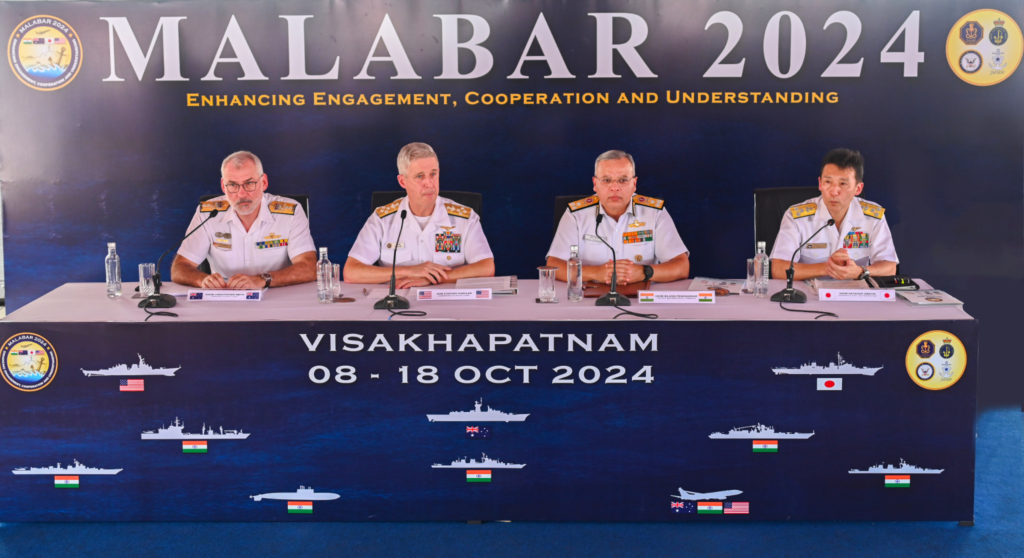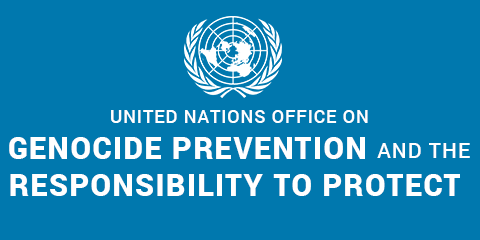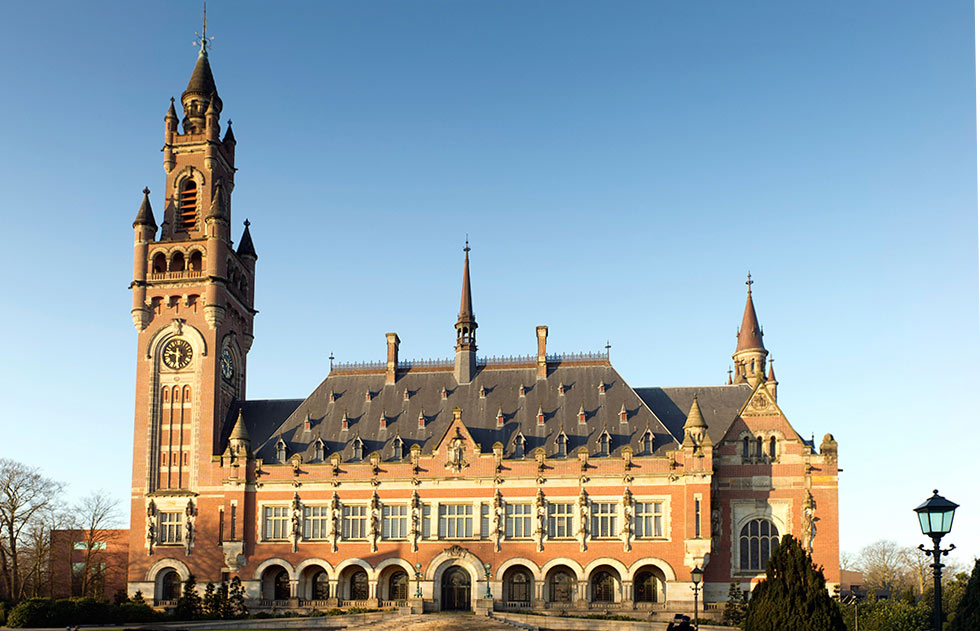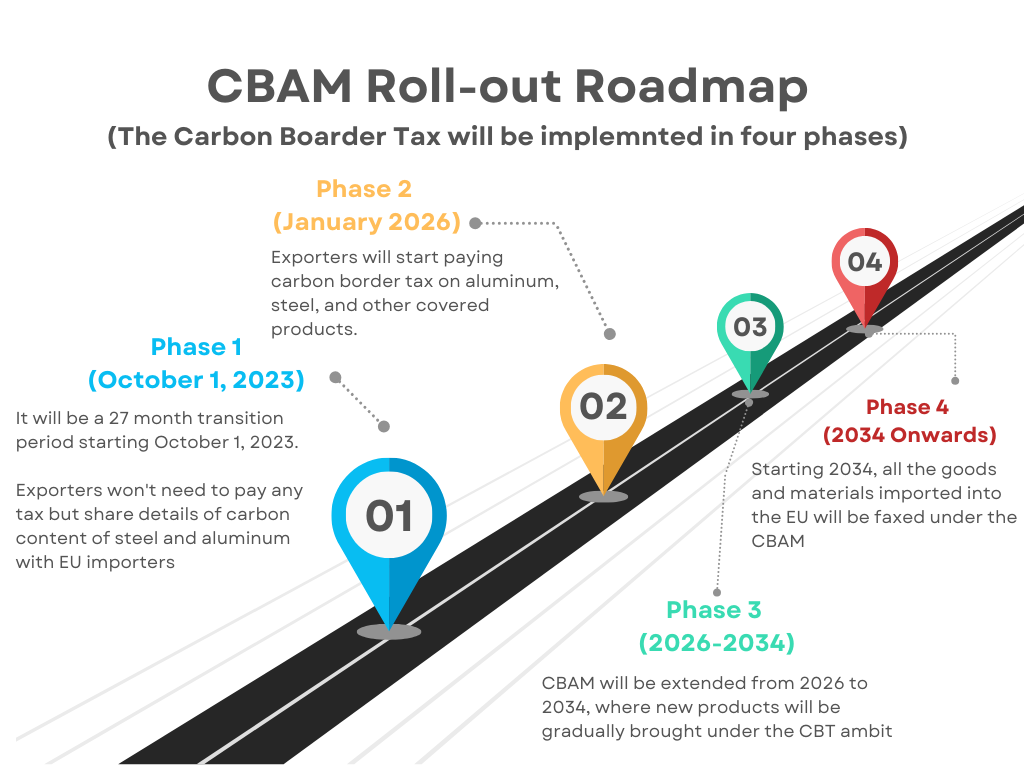Malabar Exercise (Prelims- Defence & Security)
Why in News?
The opening ceremony of MALABAR 2024 was held at Visakhapatnam on 09 October 24. The 28th edition of the multi-national maritime exercise that commenced on 08 October 24, would extend till 18 October 24.

This year’s exercise will see the participation of Australia, Japan, and the United States of America beginning with the Harbour Phase in Visakhapatnam, Andhra Pradesh, followed by the Sea Phase.
MALABAR 2024 will witness live weapon firings, complex surface, anti-air and anti-submarine warfare drills and joint manoeuvres.
About Malabar Exercise
- The Malabar series of exercises began as an annual bilateral naval exercise between India and the US in 1992.
- It gained further significance as a maritime engagement, with Japan and Australia joining in later. Japan joined the Naval Exercises in 2015.
- It is aimed at enhancing interoperability, fostering mutual understanding, and addressing shared maritime challenges in the Indian Ocean and Indo-Pacific region.
- The exercise brings together like-minded nations to further enhance the ability to train and operate jointly, towards establishing the synergy critical to achieve shared objectives.
- The exercise is aligned with the Indian Government’s vision of Security & Growth for All in the Region (SAGAR) and reflects India’s growing engagement with like-minded nations.
Breach of the UN Genocide Convention (Prelims- International Relation)
Why in News?
Bolivia joined South Africa’s case against Israel at the International Court of Justice that alleges the Israeli Gaza offensive breaches the UN Genocide Convention.
About UN Genocide Convention (Convention on the Prevention and Punishment of the Crime of Genocide,9 December 1948)

- The United Nations Convention on Genocide, was among the first conventions addressing humanitarian issues.
- It was adopted in 1948 in response to the atrocities committed during World War II. The UN recognised that “genocide is an international crime, which entails the national and international responsibility of individual persons and states.” Since then, the Convention has been widely accepted by the international community and ratified by the majority of states.
According to Article II of the Convention,
Genocide means any of the following acts committed with the intent to destroy, in whole or in part, a national, ethnical, racial or religious group, as such :
(a) Killing members of the group;
(b) Causing serious bodily or mental harm to members of the group;
(c) Deliberately inflicting on the group conditions of life calculated to bring about its physical destruction in whole or in part;
(d) Imposing measures intended to prevent births within the group;
(e) Forcibly transferring children from one group to another group.
Important provisions of the Convention
- Persons committing genocide shall be punished, whether they are constitutionally responsible rulers, public officials or private individuals.
- The Contracting Parties to the convention undertake to enact, in accordance with their respective Constitutions, the necessary legislation to provide effective penalties for persons guilty of genocide
- Persons charged with genocide shall be tried by a competent tribunal of the State in the territory of which the act was committed, or by such international penal tribunal
- Genocide shall not be considered as political crime for the purpose of extradition.
About International Court of Justice

- The ICJ is one of the six “principal organs” of the UN (General Assembly, Security Council, Economic and Social Council, Trusteeship Council, International Court of Justice, Secretariat). It was established in June 1945 by the Charter of the United Nations.
- The seat of the Court is at the Peace Palace in The Hague (Netherlands).
- It was created to (1) settle disputes between countries and (2) provide advisory opinions on legal questions brought by other UN organs.
- Only States are eligible to appear before the Court in contentious cases.
- The Court has no jurisdiction to deal with applications from individuals, non-governmental organisations, corporations or any other private entity.
- The International Court of Justice has no jurisdiction to try individuals accused of war crimes or crimes against humanity. As it is not a criminal court.
The International Criminal Court (ICC)
- Located in The Hague (Netherlands), established through the Rome Statute and adopted by the UN Diplomatic Conference of Plenipotentiaries on the Establishment of an International Criminal Court in 1998.
- It investigates and, where warranted, tries individuals charged with the gravest crimes of concern to the international community: genocide, war crimes, crimes against humanity and the crime of aggression.
What’s the difference between the International Criminal Court (ICC) and the International Court of Justice (ICJ)?
The ICC is a criminal tribunal that prosecutes individuals, primarily for war crimes or crimes against humanity. The ICJ (often called the World Court) is a civil tribunal that hears disputes between countries.
Carbon Border Adjustment Mechanism (Prelims- Environment)
Why in News?
The Finance Minister Nirmala Sitharaman stated that the European Union’s Carbon Border Adjustment Mechanism is “unilateral and arbitrary”, and it is a barrier to trade for the Indian industry.

About the Carbon Border Adjustment Mechanism
- The Carbon Border Adjustment Mechanism (CBAM) is the EU’s tool to put a fair price on the carbon emitted during the production of carbon-intensive goods that are entering the EU, and to encourage cleaner industrial production in non-EU countries.
- By confirming that a price has been paid for the embedded carbon emissions generated in the production of certain goods imported into the EU, the CBAM will ensure the carbon price of imports is equivalent to the carbon price of domestic production, and that the EU’s climate objectives are not undermined.
- It is designed to be compatible with WTO rules.
- CBAM will apply in its definitive regime from 2026, while the current transitional phase lasts between 2023 and 2025. This gradual introduction of the CBAM is aligned with the phase-out of the allocation of free allowances under the EU Emissions Trading System (ETS) to support the decarbonisation of EU industry.
CBAM definitive regime (from 2026)
| EU importers of goods covered by CBAM will register with national authorities where they can also buy CBAM certificates. The price of the certificates will be calculated depending on the weekly average auction price of EU ETS allowances expressed in €/tonne of CO2 emitted. |
| EU importers will declare the emissions embedded in their imports and surrender the corresponding number of certificates each year. |
| If importers can prove that a carbon price has already been paid during the production of the imported goods, the corresponding amount can be deducted. |
Impact of CABM on India
For developing countries like India, this mechanism raises significant concerns. They are as follows:
- In the period 2019 -2021, the EU accounted, on average 14.64% of India’s total exports. More than 50 per cent of Indian exports are under the CBAM proposal, which will weaken India’s European exports.
- Energy-intensive goods: The CBAM targets energy-intensive products such as iron, steel, cement, fertilisers, and aluminium, primarily exported by countries like India and China, will now be subject to a new tax (25 per cent tax on energy-intensive goods) based on their carbon emissions during production.
According to a recent report by the Centre for Science and Environment (CSE), the new tax represents 0.05 per cent of India’s GDP,
- Developing countries argue that such measures might contravene international climate agreements that prevent one country from imposing emission reduction demands on others.
- The proportion of coal-fired power in India is much higher than the EU and the global average.
- CBAM poses challenges to those industries that are exporting to European markets in terms of increased compliance costs such as the requirement to monitor, calculate, report, and verify emissions.
Measures that India can take
India has to develop long-term strategies and take measures in both domestic and international fronts.
Domestic Level: Government schemes like the National Steel Policy and the Production Linked Incentive scheme should be complemented by a decarbonisation principle.
International Level:
- India should negotiate with the EU to transfer clean technologies and financing mechanisms to aid in making India’s production sector more carbon efficient. One way to finance this is to propose to the EU that it set aside a portion of its CBAM revenue to support India’s climate commitments.
- Strengthen India’s emission monitoring and measuring capacity.
- India should also lead the SAARC countries in enhancing their trade among themselves so as to develop an alternative market for their carbon-intensive exports.
India must make production greener and more sustainable by incentivising cleaner production, which will benefit India in both remaining competitive in a more carbon-conscious future international economic system and achieving its 2070 net zero targets without compromising on its developmental goals and economic aspirations.


